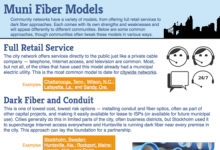Pasadena Benefits From Municipal Fiber - Community Broadband Bits Podcast 265

It shouldn't be surprising that the city that is home to CalTech and NASA's Jet Propulsion Laboratory needs high-quality connectivity. Those institutions are part of the reason Pasadena began investing in its own fiber network.
To learn the other reasons and how they went about it, Pasadena's Telecom & Regulatory Administrator Lori Sandoval joins us on Community Broadband Bits podcast 265.
The original business plan focused on connecting community anchor institutions and leasing dark fiber to private sector providers. They wanted to facilitate more private sector investment and competition in addition to meeting the internal needs of the city and the municipal electric utility.
This show is 21 minutes long and can be played on this page or via Apple Podcasts or the tool of your choice using this feed.
Transcript below.
We want your feedback and suggestions for the show-please e-mail us or leave a comment below.
Listen to other episodes here or view all episodes in our index. See other podcasts from the Institute for Local Self-Reliance here.
Thanks to Arne Huseby for the music. The song is Warm Duck Shuffle and is licensed under a Creative Commons Attribution (3.0) license.


